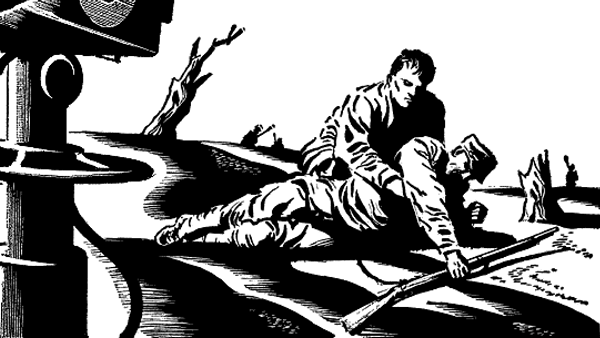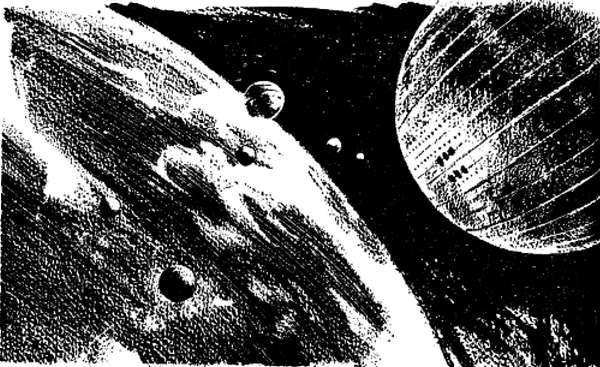[The great debate of any magazine (fan or professional) is whether or not to include a letter column. Obviously, I append reader comments to the article which they reference, but sometimes I get letters of a more general nature. Since I imagine my readers would like to know their fellow fen, I'm publishing a recently received postcard, this from a charming young lady I met at Condor…]

Dear Mr. Marcus:
It was great to see you in San Diego. The convention was an eye-opener as, to date, I have had little experience with science fiction. I'm grateful to have the Journey to curate suggested material for me to dive into!
I thought I'd bring you up to date on where I've been since the con. I'm mostly stuck here at Stanford, where I'm about to get my BA (in English Literature, class of… '62?) – if I ever get done with all these papers & exams & work for the soil mechanics & foundation engineering firm I do evenings & weekends.
Of course, to pay the tuition and room & board, I also take in ironing, do tutoring, deliver newspapers, etc., and they helped me get a student loan. It's been a real eye-opener to go to school here. Now I know what "scholarship" means. At the University of Arizona, from which I transferred last year, I did have some great learning experiences, but nothing as rich as this.
Not that I didn't have some great experiences at UA, meeting an English Professor who is an avante-garde composer (Barney Childs), and since I worked in the Fine Arts College I went to most concerts & saw the harpsichord played for the first time (double keyboard!) & heard Barney's music played. (I admit, I have a crush on him — see the enclosed photo.) And then I've been to San Francisco & seen jazz trumpeter Miles Davis & a lot of other stuff.

Barney Childs
I'll be returning, as promised, to Tucson this summer. My mother can't afford to come to commencement here, so I'll just be going home as soon as possible, and back to work in the Drama Department shortly after that. I will miss Stanford, but I look forward to seeing folks in Tucson again. I've been lucky to transfer to Stanford. Fortunately they have a need-blind policy & helped me get the loan and jobs.
I don't usually get to San Diego since I have to drive through Bakersfield, by a convoluted path, to your Highway 80 at El Centro — a long trip! But I might have to make an exception in the event of another great convention.
Best wishes and thanks to you & your family for a lovely column full of good stuff.
Vicki

(my "Activity Ticket" from the University of Arizona in 1960)
[I'd love to hear from the rest of you out in this gloriously modern year of 1962. Please feel free to send me your letters. Tell me about the sf you love, the TV you're watching, your struggles at school or in the workplace. Your words just might find their way to the Galactic Journey lettercol (especially if your initials are JBK…)]































































































